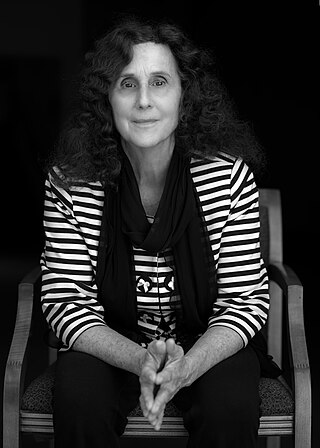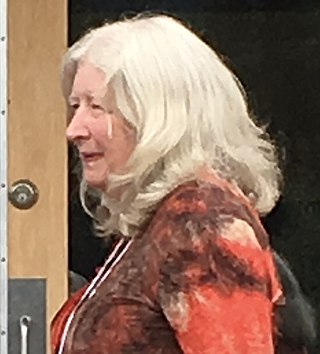Related Research Articles

The Population Bomb is a 1968 book co-authored by former Stanford University professor Paul R. Ehrlich and former Stanford senior researcher in conservation biology Anne H. Ehrlich. From the opening page, it incorrectly predicted worldwide famines due to overpopulation, as well as other major societal upheavals, and advocated immediate action to limit population growth. However regional famines have persisted on a constant basis since the publication of the book. Fears of a "population explosion" existed in the mid-20th century baby boom years, but the book and its authors brought the idea to an even wider audience.

Human population planning is the practice of managing the growth rate of a human population. The practice, traditionally referred to as population control, had historically been implemented mainly with the goal of increasing population growth, though from the 1950s to the 1980s, concerns about overpopulation and its effects on poverty, the environment and political stability led to efforts to reduce population growth rates in many countries. More recently, however, several countries such as China, Japan, South Korea, Russia, Iran, Italy, Spain, Finland, Hungary and Estonia have begun efforts to boost birth rates once again, generally as a response to looming demographic crises.
Overconsumption describes a situation where a consumer overuses their available goods and services to where they can't, or don't want to, replenish or reuse them. In microeconomics, this may be described as the point where the marginal cost of a consumer is greater than their marginal utility. The term overconsumption is quite controversial in use and does not necessarily have a single unifying definition. When used to refer to natural resources to the point where the environment is negatively affected, is it synonymous with the term overexploitation. However, when used in the broader economic sense, overconsumption can refer to all types of goods and services, including manmade ones, e.g. "the overconsumption of alcohol can lead to alcohol poisoning". Overconsumption is driven by several factors of the current global economy, including forces like consumerism, planned obsolescence, economic materialism, and other unsustainable business models and can be contrasted with sustainable consumption.

Paul Ralph Ehrlich is an American biologist known for his predictions and warnings about the consequences of population growth, including famine and resource depletion. Ehrlich is the Bing Professor Emeritus of Population Studies of the Department of Biology of Stanford University, and President of Stanford's Center for Conservation Biology.
An ecological or environmental crises occurs when changes to the environment of a species or population destabilizes its continued survival. Some of the important causes include:
The Tyler Prize for Environmental Achievement is an annual award for environmental science, environmental health, and energy. Tyler Laureates receive a $250,000 cash prize and a medallion. The prize is administered by the University of Southern California and was established by John and Alice Tyler in 1973. It is regarded as the "Nobel for environment".
Population Connection is a non-profit organization in the United States that raises awareness of population challenges and advocates for improved global access to family planning and reproductive health care. The organization was founded in 1968 by Paul R. Ehrlich, Richard Bowers, and Charles Remington in the wake of Ehrlich's best-selling book, The Population Bomb. The organization adopted its current name in 2002.

Garrett James Hardin was an American ecologist and microbiologist. He focused his career on the issue of human overpopulation, and is best known for his exposition of the tragedy of the commons in a 1968 paper of the same title in Science, which called attention to "the damage that innocent actions by individuals can inflict on the environment". He is also known for Hardin's First Law of Human Ecology: "We can never do merely one thing. Any intrusion into nature has numerous effects, many of which are unpredictable." Garrett held hardline anti-immigrant positions as well as positions on eugenics and multiethnicism that have led multiple sources to label him a white nationalist. Beginning in the late 2010s, the Southern Poverty Law Center declared his publications "frank in their racism and quasi-fascist ethnonationalism".
Michael Ellman Soulé was an American biologist, known for his work in promoting the idea of conservation biology.

Pamela Jane Bjorkman NAS, AAAS is an American biochemist and molecular biologist. She is the David Baltimore Professor of Biology and Biological Engineering at the California Institute of Technology (Caltech). Her research centers on the study of the three-dimensional structures of proteins related to Class I MHC, or Major Histocompatibility Complex, proteins of the immune system, and proteins involved in the immune responses to viruses. Bjorkman's goal is to improve current therapeutic applications. Bjorkman is most well known as a pioneer in the field of structural biology.
Human overpopulation describes a concern that human populations may become too large to be sustained by their environment or resources in the long term. The topic is usually discussed in the context of world population, though it may concern individual nations, regions, and cities.

Our Plundered Planet is a book published in 1948 by American conservationist Fairfield Osborn about environmental destruction by humankind. With a focus on soil, the book is a critique of humankind's poor stewardship of Earth. It typifies the earliest apocalyptic environmental literature, in which human beings are seen as destroyers of the natural world.

Global biodiversity is the measure of biodiversity on planet Earth and is defined as the total variability of life forms. More than 99 percent of all species that ever lived on Earth are estimated to be extinct. Estimates on the number of Earth's current species range from 2 million to 1 trillion, but most estimates are around 11 million species or fewer. About 1.74 million species were databased as of 2018, and over 80 percent have not yet been described. The total amount of DNA base pairs on Earth, as a possible approximation of global biodiversity, is estimated at 5.0 x 1037, and weighs 50 billion tonnes. In comparison, the total mass of the biosphere has been estimated to be as much as 4 TtC (trillion tons of carbon).
In environmental science, a population "overshoots" its local carrying capacity — the capacity of the biome to feed and sustain that population — when that population has not only begun to outstrip its food supply in excess of regeneration, but actually shot past that point, setting up a potentially catastrophic crash of that feeder population once its food populations have been consumed completely. Overshoot can apply to human overpopulation as well as other animal populations: any life-form that consumes others to sustain itself.

Environmental issues are disruptions in the usual function of ecosystems. Further, these issues can be caused by humans or they can be natural. These issues are considered serious when the ecosystem cannot recover in the present situation, and catastrophic if the ecosystem is projected to certainly collapse.

John Paul Holdren is an American scientist who served as the senior advisor to President Barack Obama on science and technology issues through his roles as assistant to the president for science and technology, director of the White House Office of Science and Technology Policy, and co-chair of the President's Council of Advisors on Science and Technology (PCAST).
This is a list of notable events relating to the environment in 1968. They relate to environmental law, conservation, environmentalism and environmental issues.

Gretchen C. Daily is an American environmental scientist and tropical ecologist. She has contributed to understanding humanity's dependence and impacts on nature, and to advancing a systematic approach for valuing nature in policy, finance, management, and practice around the world. Daily is co-founder and faculty director of the Natural Capital Project, a global partnership that aims to mainstream the values of nature into decision-making of people, governments, investors, corporations, NGOs, and other institutions. Together with more than 300 partners worldwide, the Project is pioneering science, technology, and scalable demonstrations of inclusive, sustainable development.
Rodolfo Dirzo is a professor, conservationist, and tropical ecologist. He is a Bing Professor in environmental science at Stanford and a senior fellow at the Stanford Woods Institute for the Environment. His research interests mainly focus on plant-animal interactions, evolutionary ecology, and defaunation in the tropics of Latin America, Africa, and the Central Pacific. He was a member of the Committee on A Conceptual Framework for New K-12 Science Education Standards, co-authoring the framework in 2012, and continues to educate local communities and young people about science and environmental issues.

Carol Linda Boggs is an American biologist specializing in the reproductive biology, population biology, ecology, and evolution of butterflies. Boggs completed her BA in 1973 and her PhD in 1979 in zoology at the University of Texas at Austin. Since 2013, she has been a professor in the School of the Earth, Ocean and Environment and the Department of Biological Sciences at the University of South Carolina. Boggs is the author of more than 120 peer-reviewed articles and has served on editorial boards for several journals. She has been a fellow of the American Association for the Advancement of Science since 2001.
References
- ↑ University, Stanford (2016-09-14). "Anne Ehrlich". Stanford News. Retrieved 2022-11-25.
- 1 2 3 4 Friedman, Lynne; Basu, Janet (March 18, 1998). "Tyler Prize goes to Ehrlichs". news.stanford.edu. Retrieved 2022-11-30.
- 1 2 3 4 5 6 7 8 9 10 11 "Center for Conservation Biology | Anne Howland Ehrlich, biography". 2011-06-27. Archived from the original on 2011-06-29. Retrieved 2022-11-29.
- ↑ "Anne H. Ehrlich's research while affiliated with Stanford University and other places". researchgate.
- 1 2 White Scheuering, Rachel W. "Shapers of the Great Debate on Conservation: A Biographical Dictionary|Hardcover". Barnes & Noble. Retrieved 2022-11-30.
- 1 2 Altena, Trijntje van. "Paul R. Ehrlich". Heineken Prizes. Retrieved 2022-11-27.
- 1 2 3 4 "1998 Tyler Laureates". Tyler Prize for Environmental Achievement. Retrieved 2022-11-28.
- ↑ "New book by Paul and Anne Ehrlich strikes back at "brownlash" (10/96)". news.stanford.edu. Retrieved 2022-11-30.
- 1 2 "Paul and Anne Ehrlich honored with Nuclear Age Peace Awards". news.stanford.edu. Retrieved 2022-11-27.
- 1 2 "Paul R. Ehrlich | Center for Conservation Biology". ccb.stanford.edu. Retrieved 2022-11-28.
- ↑ Anne Ehrlich, Stanford
- ↑ "Anne Howland Ehrlich". Population Media Center. Retrieved 2022-11-29.
- ↑ "Écoscience list of issues". Taylor & Francis. Retrieved 2022-11-29.
- 1 2 White, Rachel; Scheuering, Rachel White (2004). Shapers of the Great Debate on Conservation: A Biographical Dictionary. Greenwood Publishing Group. pp. 130–131. ISBN 978-0-313-32826-8.
- 1 2 3 Ehrlich, Paul R. (1968). The population bomb. Internet Archive. New York, Ballantine Books.
- ↑ Howland Ehrlich, Anne; Ehrlich, Paul R. "The Population Explosion". www.ditext.com. Retrieved 2022-11-30.
- ↑ Jacobsen, Peter (2022-03-31). "Meet the Advertising Expert who Inspired Today's Anti-Population Propaganda | Peter Jacobsen". fee.org. Retrieved 2022-11-30.
- ↑ Ehrlich, Paul R.; Ehrlich, Anne H. (1990). The population explosion . London: Hutchinson. pp. 39–40. ISBN 978-0091745516 . Retrieved 20 July 2014.
- 1 2 "ENVIRONMENT/POPULATION: 1994 U.N. prize winner shocks scholars". Inter Press Service. 1994-11-09. Retrieved 2022-11-27.
- ↑ Daily, Gretchen C.; Ehrlich, Anne H.; Ehrlich, Paul R. (July 1994). "Optimum Human Population Size". Population and Environment: A Journal of Interdisciplinary Studies. Human Sciences Press. 15 (6): 469–475. doi:10.1007/BF02211719. S2CID 153761569. Archived from the original on 2017-08-17.
- ↑ "The Stork and the Plow". Yale University Press. Retrieved 2022-11-28.
- ↑ Zaba, Basia (1996). "How many people can we support?". Nature. 379 (6563): 308–309. Bibcode:1996Natur.379..308Z. doi: 10.1038/379308a0 . ISSN 1476-4687. S2CID 36085033.
- ↑ "One With Nineveh". Island Press. Retrieved 2022-11-28.
- ↑ "The Dominant Animal: Human Evolution and the Environmen..." Goodreads. Retrieved 2022-11-29.
- 1 2 Howland Ehrlich, Anne; Ehrlich, Paul R. (2013-03-07). "Can a collapse of global civilization be avoided?". Proceedings of the Royal Society B: Biological Sciences. 280 (1754): 20122845. doi:10.1098/rspb.2012.2845. PMC 3574335 . PMID 23303549.
- ↑ "The Heinz Awards, Paul and Anne Ehrlich profile". Heinzawards.net. Retrieved 2012-05-20.
- ↑ Friedmann, Lynne; Basu, Jane (March 17, 1998). "1998 Tyler Prize for Environmental Achievement awarded to Anne and Paul Ehrlich of Stanford University (3/98)". news.stanford.edu. Retrieved 2022-11-27.